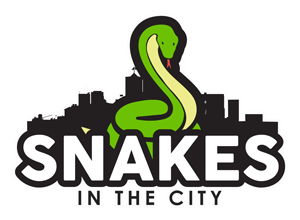Golden Crowned Snake
Weakly venomous
Other Name: Crowned Snake
Significance to Humans
Golden Crown snakes rarely bite, but will put on an impressive mock display, rearing up and ‘striking’ with a closed mouth. Although it is not considered to be a dangerous snake, as with any snake bite apply correct first aid and seek medical attention.
General Description
The Golden-crowned Snake is brown to grey above and pink below, with a yellowish crown-shaped marking on the head which gives it its name. The pupils are vertically elliptical.
Average Length
50cm but specimens to 90cm are known.
Habitat in Sydney Region
The Golden-crowned Snake is a small nocturnal, terrestrial species that is sometimes encountered on warm nights in suburban areas. Domestic cats may bring one inside and cause some alarm. Lives in rainforest, and sheltered, moist areas within open forest eg; creek lines amongst litter, rocks, logs etc. Wherever good, lush ground cover prevails.
General Habits
Secretive, nocturnal snakes. Hunts day-active skinks in leaf-litter at night while they are sleeping. Primarily terrestrial. Shelters by day in moist litter, under rocks, and logs.
Diet
Lizard & skink specialist
Local distribution
Quite common in the Sydney area.
Around the Home
Under compost, logs and stones in well-vegetated gardens Compost heaps, moist garden areas with abundant leaf-litter, and around rockeries provide ideal habitat.
